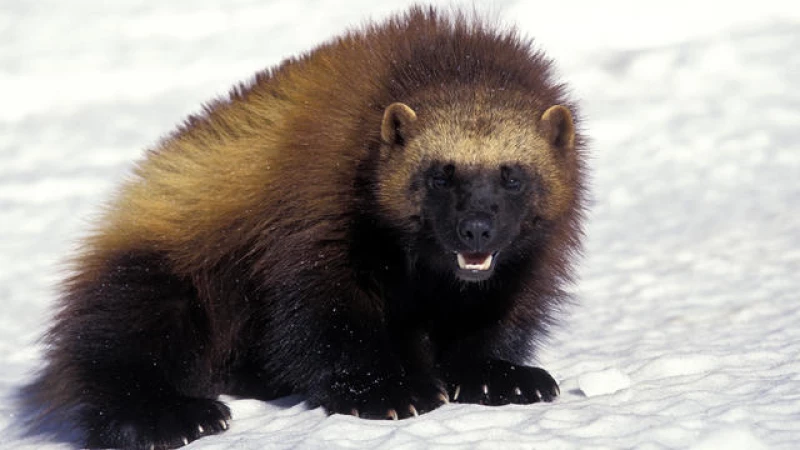North American Wolverine Listed as Threatened Species
The North American wolverine has been listed as a threatened species under the Endangered Species Act, the U.S. Fish and Wildlife Service said Wednesday. Officials said climate change has threatened the species. Less than 300 wolverines are estimated to live in the contiguous U.S., according to the National Wildlife Federation.
The designation will give the species protection, requiring federal agencies to ensure their actions are unlikely to jeopardize wolverines, according to the agency. The Endangered Species Act, enacted in 1973, establishes protections for fish, wildlife and plants that are listed as threatened or endangered.
"Current and increasing impacts of climate change and associated habitat degradation and fragmentation are imperiling the North American wolverine," Fish and Wildlife Pacific Regional Director Hugh Morrison said. "Based on the best available science, this listing determination will help to stem the long-term impact and enhance the viability of wolverines in the contiguous United States."

Authorities have also described moose, salmon, snowshoe hares, American pikas, sea turtles, puffins, Alaskan caribou, piping plovers, polar bears and crocodiles as being at risk from climate change.
Threat to Wolverine Population
For over a decade, the wolverine population in the U.S. has been under threat due to climate change. The loss of their wintry habitat has been directly linked to climate change, endangering their survival. In 2011, U.S. Fish and Wildlife officials attempted to add wolverines to the Endangered Species Act, recognizing the urgency of the situation.
In the early 20th century, wolverine populations were severely impacted by trapping and poisoning campaigns. However, in recent decades, environmentalists have conducted extensive research on these elusive animals. They have utilized historical data, habitat analysis, geographic information system mapping, radio-telemetry tracking, and genetic studies to gain insights into wolverine occurrence and behavior.
Currently, wolverines can be found in the Northern Rocky Mountains and North Cascade Mountains in the contiguous U.S., as well as in alpine regions, boreal forests, and tundra of Alaska and Canada. Last year, a wolverine sighting in Utah marked only the eighth confirmed sighting since 1979, highlighting their rarity in the area.
The wolverine population in Alaska is considered stable, according to the National Park Service. This is attributed to the preservation of wilderness areas and efforts to prevent overharvesting.
Wolverines belong to the Mustelidae family, which includes other carnivorous mammals such as weasels, mink, marten, and otters. They are known for their powerful, aggressive, territorial, and tenacious nature.







